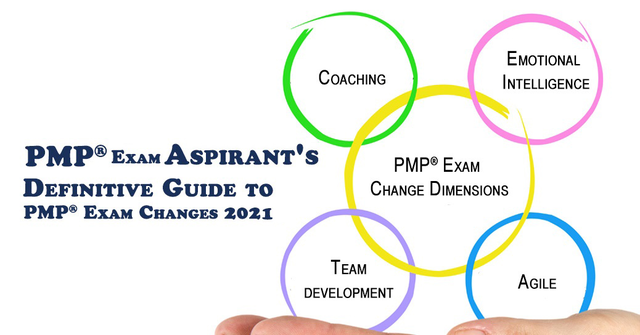

In June 2019, PMI Certification has released a new PMP® certification content outline. Based on this exam content outline, exam pattern will change by Jan 2021.
It is an effort to equip project managers with today’s modern project environment. So, now the question is what modern project management is?
Based on research by PMI, the following are some highlights to see how project management profession has progressed:
1. Project Manager as a Coach
Project Practitioner keeps observing the importance of empathy and care. Now, they less tell people what to do. They invest in guiding the team more instead. And, they clear obstacles from their work and path.
All these show the need for a coach over a manager. A coach makes the team capable enough to deliver a successful project.
The role of a coach is crucial, especially for the knowledge industry. In the knowledge industry, the way of thinking influences outcomes. In this case, when only the manager decides about what to do? – limits the contribution of knowledge which can come from anywhere within the team.
A coach understands that the team can discover the solution to every problem. He only needs to give a path to flourish their potential.
A coach has faith in the team. An empowered team achieves better results. But, the team empowerment is difficult to achieve if it lacks skills. So, the project manager needs to ensure adequate training for team members/stakeholders. He needs to see –
What the required competencies are and what are the available training options
Team collaboration becomes powerful when there is a shared understanding of project deliverables. But, creating a shared understanding is not an easy task. It is challenging because –
Team members and stakeholders come with a variety of backgrounds and opinions. So managing conflict is also crucial to lead the team for the project vision.
When something is blocking the team from doing its work – the coach comes forward to remove those barriers. Barriers eat a lot of valuable time and prevent the team from achieving their goals.
The coach works to create an environment which is positive and collaborative. He bulldozes the impediment which comes in their way to create that environment.
When the project manager works as a coach, he also needs to recognize and act on mentoring opportunities. A coach also takes care of the emotional needs of stakeholders.
In summary, instead of command and control –
The focus is more towards making the team and stakeholder’s more empowered and confident to work for a common goal.
Here, it does not mean that a need for a manager completely vanished. The actual matter is that –
Now the need for a coach is also recognized who can inspire the team by encouraging team empowerment. So, a project manager is a coach too
2. Project Processes
Nowadays, the focus is to seek opportunities to deliver business value frequently. Organizations are using Incremental and iterative approaches for the same. These approaches help to examine business value throughout the project. So, instead of delivering value at the end of the project, which is common in predictive methods, the emphasis is to deliver a minimum viable product first. Then the product can be evolved further.
So apart from managing different project areas like –
A project manager also takes care of delivering business value.
Now the success of a project is not just about meeting budget and schedule constraints-
It is more about delivering business value.
3. Business Environment:
Project manager also take part in keeping track to external and internal business environment. Because, these factors can significantly impact project success.
These external and internal factors can also impact the benefits realization. So the project manager also takes help of various measurement systems to track benefits.
A project manager should be aware of –
PMI observed areas mentioned above, which have been progressed. Based on these progressions on different areas of –
PMI added tasks in the recent content outline.
Now, let’s summarize areas which are completely new added in the content outline 2019.
Following are topics whose references are not available in the PMBOK® Guide:
People:
Process:
So,
We should get a shared understanding for the approaches of knowledge transfers. We have to take care well confirmation of these knowledge transfer approaches.
Business Environment:
We will keep updating this section as PMI publishes guidelines for the same. Till then you can refer the key points which PMI added for this domain:
Now come to the point – how to prepare for this NEW PMP® Exam?
The good news is that all the existing content would be relevant for the exam. In case you need guideline how to map the existing content with changes?
Refer following PMP® Exam Content Crossover Map
What we believe is PMBOK® Guide will give 50% of the content for future exam.
We have started working on the NEW marked items in this crossover map, and it would be available sufficient time before exam change. Also, all these new items are mostly based on what we have discussed in this blog.
The critical point is now PMBOK® Guide knowledge areas and process groups need to be analyzed both for predictive and Agile way of working. Our updated course will reflect all these crucial new ways of looking at PMBOK® Guide items.
Now, a question may come in your mind that –
What are the domains in the new content outline and how many questions will come from each domain?
PMI introduced three domains in PMP® exam content outline 2019 as follows:
Following is the domain wise question distribution

No Trainings found